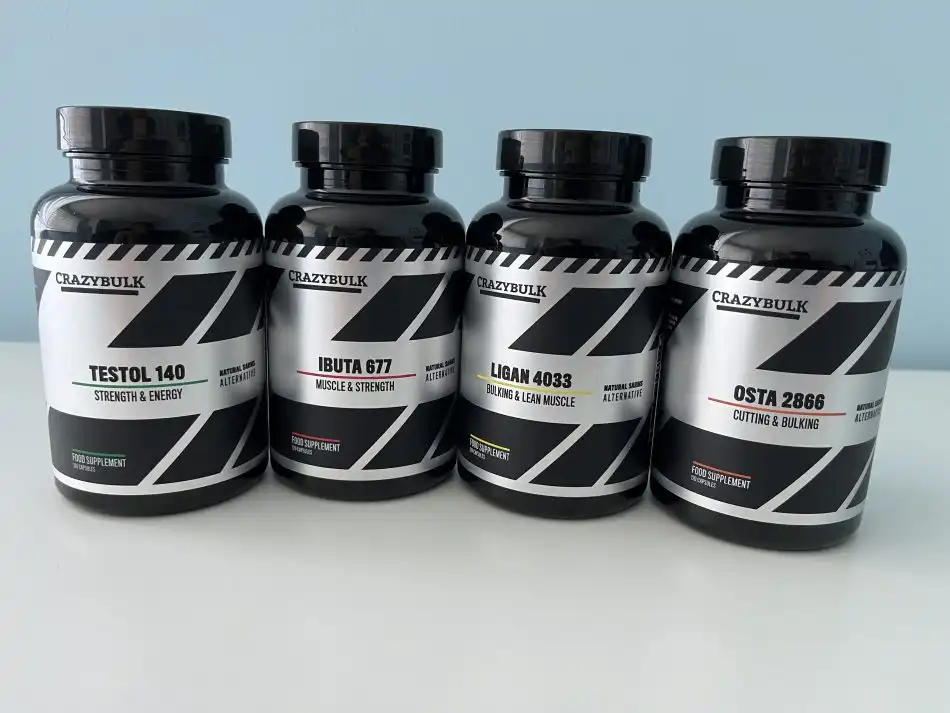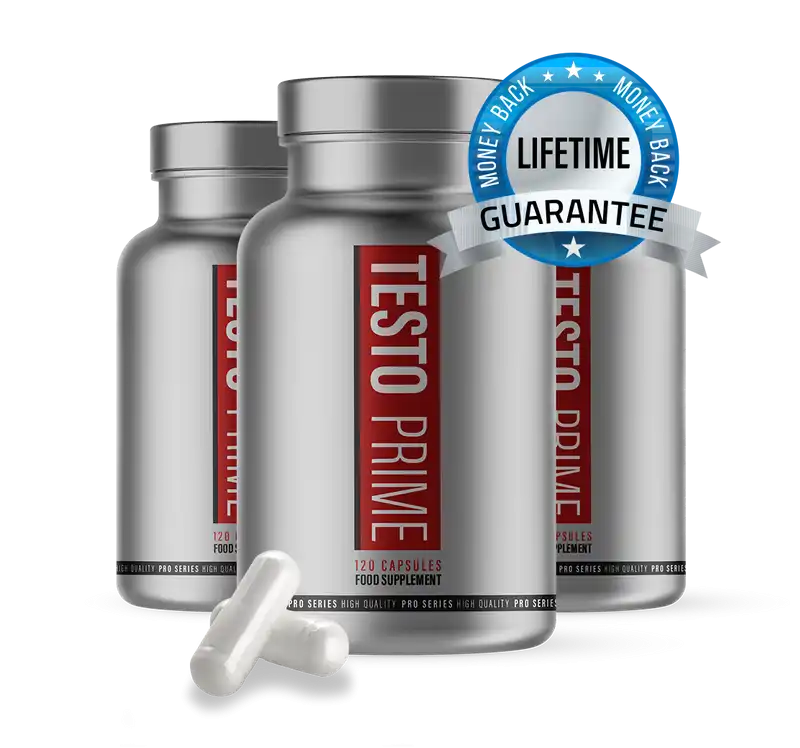So can SARMs make you taller? Well, selective androgen receptor modulators (SARMs) have gained popularity in recent years for their potential to promote muscle growth and enhance athletic performance. These compounds are designed to selectively bind to androgen receptors in the body, leading to tissue-specific effects without triggering the unwanted side effects often seen with anabolic steroids. As the use of SARMs has become more widespread, questions have arisen regarding their potential impact on height growth, particularly among adolescents and young adults who have not yet reached their full adult height.

To answer this question, it is important to understand the relationship between SARMs and the growth hormone axis, which includes the production of insulin-like growth factor 1 (IGF-1). IGF-1 is a key mediator of the anabolic effects of growth hormone and plays a central role in the regulation of body growth. Some SARMs have been shown to affect IGF-1 levels, which in turn could have implications for height growth. Additionally, other factors, such as the potential impact of SARMs on bone density, muscle growth, and the closure of growth plates, must also be considered.
Key Takeaways
- SARMs may have an indirect effect on height growth via their impact on IGF-1 levels and bone density
- The potential effects of SARMs on adolescents and growth plates remain uncertain and require further research
- SARMs are not currently approved for medical use and their long-term safety has not been fully established
Understanding SARMs
Selective Androgen Receptor Modulators (SARMs) are synthetic compounds that mimic the effects of androgens, which are natural male sex hormones. They are designed to have similar effects to anabolic steroids but with fewer side effects. The primary goal of designing these compounds is to provide a healthier and safer alternative to traditional anabolic steroids while still offering similar benefits.
SARMs work by selectively targeting specific androgen receptors in various tissues, such as those found in muscles and bones. This selective action allows them to promote muscle growth and bone density without many of the side effects associated with anabolic steroids. For example, unlike steroids, which can cause estrogenic and cardiovascular side effects, SARMs aim to minimize these potential risks through tissue selectivity. However, it is worth noting that the exact mechanisms of action for tissue selectivity in SARMs are not yet fully understood.
Looking for the best SARMs alternatives that can help you achieve rapid muscle growth and fast fat loss without all the side-effects?
Many studies have found that SARMs can help improve muscle mass and bone density. As a result, they are thought to potentially contribute to an increase in height. However, it is essential to exercise caution in interpreting these findings, as more research is needed to confirm this potential effect and understand any associated risks.
It is crucial to point out that SARMs are not without side effects. Some users have reported sleep disturbances, sexual dysfunction, liver injury, infertility, and testicular shrinkage. Still, these side effects are considered to be less severe than those associated with anabolic steroids.
In summary, SARMs are synthetic compounds that offer some benefits similar to anabolic steroids while reducing potential side effects. Despite the potential advantages and drawbacks, much remains to be learned about how these compounds work and the full extent of their effects.
SARMs and Height Growth
Selective Androgen Receptor Modulators (SARMs) are a class of compounds that selectively target androgen receptors in the body, promoting muscle growth and offering various health benefits. However, the relationship between SARMs and height growth remains a topic of interest for individuals seeking natural ways to increase their height.
The human growth process is primarily influenced by hormones such as growth hormone (GH) and insulin-like growth factor 1 (IGF-1), which work together to stimulate growth plates in bones during childhood and adolescence. As we reach the end of puberty, growth plates gradually close, preventing further height growth.
While SARMs play a significant role in promoting muscle growth, their direct effect on height growth is not well-established. Research on SARMs focuses mainly on their muscle-building properties, with limited data on their impact on height growth or the development of growth plates. While some compounds like MK-677 have shown to increase GH and IGF-1 levels in the body, there is no concrete scientific evidence that these elevated hormone levels translate to increased height in adults.
It’s important to note that the use of SARMs may also be accompanied by potential side effects. As such, considering their use for height growth should be approached with caution and under the guidance of a healthcare professional.
In conclusion, the impact of SARMs on height growth is unclear, and more research is required to establish a connection between SARMs and increased height. Caution should be exercised, especially among individuals who have not yet reached the end of their puberty or whose growth plates are still open.
Possible Effects of SARMs on Adolescents
Selective Androgen Receptor Modulators (SARMs) are a group of products known to target androgen receptors in the body, promoting increased muscle mass. In recent times, there has been a rise in the use of SARMs among teenagers and young adults due to social media platforms promoting them as efficient ways to boost physical appearance, gain muscle mass, and improve athletic performance.
However, the potential side effects and dangers of using SARMs in adolescents and children should not be overlooked. For girls, virilization is a concerning side effect, which refers to the development of masculine features, potentially affecting their natural femininity. Such effects could disrupt their normal growth and development in the long run.
Another critical factor to consider is that the use of SARMs has been linked to life-threatening effects, such as heart attacks, strokes, and liver problems. These severe side effects may pose significant health risks to adolescents as their bodies continue to develop.
As for stunted growth, some studies suggest that the use of SARMs may lead to decreased testicular size and mood swings, which could indirectly affect an adolescent’s growth. It is essential to understand that the data available on SARMs is limited, and their long-term effects on adolescents and children are still not well-researched.
The possibility of SARMs contributing to adding extra inches to one’s height is not mentioned in any available research or study. Thus, it is not advisable for adolescents or children to use SARMs as a means to grow taller, considering the potential side effects, concerns about their unregulated nature, and a lack of scientific evidence supporting any height increase.
In conclusion, it is essential for parents, adolescents, and young adults to be aware of the potential risks associated with using SARMs. Until more research is conducted and regulated products are available with clinical data, the safety and effects of SARMs on adolescents and children remain uncertain.
Relation Between SARMs and IGF-1
Selective Androgen Receptor Modulators (SARMs) are a class of therapeutic compounds that have similar properties to anabolic agents but with reduced androgenic activity. They have the potential to improve muscle growth, bone density, and overall physical performance. One of the factors that play a crucial role in muscle growth and bone development is Insulin-like Growth Factor 1 (IGF-1). It is a hormone that is produced by the liver and has anabolic effects in adults, mainly promoting the growth and repair of muscle tissues.
IGF-1 is closely tied to growth hormone (GH), as its secretion is stimulated by GH. Since SARMs influence the androgen receptors in the body, they also indirectly impact the secretion of growth hormones and, subsequently, IGF-1 levels. Increased levels of IGF-1 can potentially lead to improved muscle mass and bone density, which could contribute to an increase in height, especially in individuals who are still growing.
However, it is essential to understand that the direct correlation between SARMs and height is not yet scientifically established. While some studies suggest that SARMs may have a positive impact on bone development and muscle growth, they do not specifically address the question of whether these compounds can increase an individual’s height.
In conclusion, although there is some evidence pointing towards a possible relationship between SARMs and IGF-1, further research is required to determine whether SARMs can indeed make a person taller. It is crucial for individuals considering the use of SARMs to consult with a medical professional before embarking on any supplementation course to understand the potential benefits and risks associated with their use.
SARMs and Bone Density
SARMs, also known as Selective Androgen Receptor Modulators, are a class of compounds that have been gaining popularity as an alternative for people looking to improve muscle mass and strength. One of the lesser-known benefits of these compounds is their potential effect on bone density.
Bone density is crucial for overall health, and it plays a significant role in preventing fractures, especially in older people or those with osteoporosis. Osteoporosis is a condition where the bones become weak and brittle, increasing the risk of injury. Maintaining or improving bone density is essential in managing this condition.
SARMs have shown promise in this area, as they can stimulate bone-building cells called osteoblasts while inhibiting the action of bone-resorbing cells, known as osteoclasts. This dual action can lead to improvements in bone mineral density, as well as bone mechanical strength. As a result, SARMs might offer a more effective treatment for individuals with osteoporosis, compared to conventional hormone replacement therapies.
Moreover, SARMs can contribute positively to overall bone health by increasing muscle mass and strength. Stronger muscles can reduce the impact of falls and other accidents, providing better support for the skeletal system. This additional protection can minimize the risk of fractures and other injuries related to weak bones.
In summary, SARMs have shown potential as an effective therapy for maintaining and improving bone density. Their action on both muscle mass and bone strength can offer beneficial outcomes for individuals with osteoporosis or those looking to enhance overall bone health.
SARMs and Muscle Growth
Selective androgen receptor modulators (SARMs) are a class of compounds that are known to promote muscle growth and improve muscle strength. They function by selectively binding to androgen receptors, which are responsible for regulating the growth and development of muscles. SARMs have gained popularity among athletes and bodybuilders due to their potential benefits in increasing muscle mass and strength with fewer side effects compared to traditional anabolic steroids.
One of the primary benefits of SARMs is their ability to stimulate muscle hypertrophy (size). SARMs have shown promising results in increasing muscle mass in early human trials. However, it is important to note that the muscle gains from SARMs may be more modest compared to anabolic steroids. Studies have shown that participants on SARMs gained around 1kg-1.5kg in fat-free mass over a 4-6 week period.
Alongside muscle growth, SARMs have the potential to increase muscle strength. This improvement in strength can be beneficial for athletes and bodybuilders looking to enhance their performance and reduce the risk of injury. SARMs may also play a role in combating muscle wasting in certain medical conditions where muscle loss is a common symptom, such as sarcopenia and cachexia. Their ability to maintain muscle mass in these situations can help improve patients’ quality of life.
In conclusion, SARMs have demonstrated their potential to encourage muscle growth and strength, with a lower risk of side effects compared to anabolic steroids. However, it is essential to conduct more research to understand their long-term effects and ensure their safety and efficacy for muscle enhancement and medical purposes.
Side Effects of SARMs
Selective Androgen Receptor Modulators (SARMs) have gained popularity among fitness enthusiasts and athletes for their potential benefits in increasing muscle mass and reducing body fat. However, there are numerous side effects associated with the use of these unregulated compounds. In this section, we discuss some of the most common and serious side effects of SARMs.
Potential side effects of SARMs use can vary from one person to another. Many users have reported experiencing headaches as a result of taking SARMs, which may be a result of the compound’s effect on hormone levels. Another common issue is liver damage, as some SARMs have been shown to cause liver toxicity, especially when taken in high doses or over a prolonged period of time. It is essential for users to monitor their liver function while using these products.
A more serious concern is the increased risk of heart attack and stroke. Some studies and reports have linked SARMs use to an increased risk of these cardiovascular issues, indicating that the compounds may have a negative impact on heart health. This risk should not be taken lightly, and anyone considering the use of SARMs should be aware of the potential threat to their cardiovascular well-being.
While SARMs are claimed to have fewer androgenic side effects than anabolic steroids, users might still experience some degree of hair loss. This can occur due to hormonal fluctuations, as SARMs can sometimes suppress natural testosterone production, leading to an imbalance that may result in hair shedding. However, this effect may vary based on individual predispositions and the specific SARM being used.
In conclusion, the side effects of SARMs should not be underestimated. While they may hold promises for muscle gain and fat loss, the potential risks and health consequences need to be carefully considered before deciding to incorporate them into a fitness regimen. Users should be cautious and aware of the possible side effects, including headaches, liver damage, heart attack, stroke, and hair loss, to make informed decisions about their use.
Regulation and Legality of SARMs
Selective Androgen Receptor Modulators (SARMs) have gained popularity in the fitness and bodybuilding community for their potential to promote muscle growth and athletic performance. While the idea of using SARMs to increase height may appeal to some, it is essential to understand their regulatory status and legality.
SARMs are not legally marketed in the United States as dietary supplements or drugs. The FDA has issued warnings regarding the use of SARMs, stating that these products are often sold without clear labels, leading consumers to potentially believe they are safe and legal to use. This lack of proper labeling increases the risk of negative health effects for users.
Although SARMs are not approved for human consumption, they are legal when sold as research chemicals. This has led to a grey area in their sales, as some suppliers may market them as research products while targeting athletes and bodybuilders seeking to improve their performance. Such practices can lead to the misuse of SARMs, putting consumers’ health at risk.
In the world of sports, SARMs are classified as prohibited substances by the World Anti-Doping Agency (WADA). Athletes found to be using SARMs can face suspension or other consequences, as such substances are considered performance-enhancing drugs.
In an effort to further regulate SARMs, the U.S. Congress introduced the SARMs Control Act in 2019. While the bill did not become law at that time, its aim was to tighten control over the sale and distribution of these substances, classifying them alongside other anabolic steroids.
In conclusion, the regulation and legality of SARMs remain a complex issue. They are not approved for use as dietary supplements or drugs by the FDA, and their use in sports is prohibited by WADA. Potential users should be aware of the risks and legal implications associated with the consumption of SARMs.
SARMs vs Anabolic Steroids vs Prohormones
Selective androgen receptor modulators (SARMs), anabolic steroids, and prohormones are three distinct compounds commonly associated with muscle growth, strength, and bodybuilding. While these substances can help improve athletic performance, they each have unique differences and potential side effects.
SARMs are investigational androgen receptor ligands with anabolic properties, targeting specific receptors in the muscle, fat, and bone tissue. They hold a reputation for providing several benefits such as increased lean muscle mass and reduced body fat percentage, without some of the harsh side effects of anabolic steroids.
Anabolic steroids, derived from testosterone, artificially increase hormone levels in the body to build muscle and strength. These compounds directly bind to androgen receptors, promoting muscle growth and other masculine characteristics. However, anabolic steroids can cause health issues such as liver toxicity, increased risk of cardiovascular disease, and inhibition of natural testosterone production.
Prohormones are precursors to hormones, which means the body converts them into target substances, such as nandrolone. After undergoing a first pass through the liver (similar to SARMs), they become active hormones. Although they have some benefits, prohormones’ side effects can be more severe than SARMs. The most well-known prohormone, Superdrol, is known to be extremely liver toxic and cause androgenic side effects such as acne and hair loss.
In summary, while SARMs, anabolic steroids, and prohormones all have the potential to help achieve bodybuilding and athletic goals, they differ in their mechanisms of action, side effects, and legal status. It is important for individuals to consider these aspects when deciding which compound to use for performance enhancement.
SARMs in Sports and Athletics
Selective androgen receptor modulators (SARMs) have gained popularity in sports and athletics as they are believed to enhance athletic performance by increasing strength, endurance, and muscle growth. Many athletes seek SARMs as an alternative to anabolic steroids due to their tissue-selective mechanism and lower side effect profile. However, one should be cautious of potential side effects and the legality of SARMs in competitive sports.
Athletes who utilize SARMs may experience an increase in strength and muscle growth. This is due to SARMs’ ability to selectively target androgen receptors in muscle and bone tissue, leading to an increased rate of protein synthesis and muscle development. As a result, athletes may observe significant improvements in their performance in various sports.
Endurance is another aspect of athletic performance that SARMs can potentially influence. Certain SARMs, such as Cardarine or GW-501516, have been shown to increase endurance by improving cardiovascular and metabolic efficiency. This allows athletes to train longer and harder, which can be beneficial for endurance sports such as cycling, running, and swimming.
Blood sugar levels and insulin sensitivity are essential factors in maintaining energy levels and overall health, particularly for athletes who require optimal physical performance. SARMs have been reported to improve insulin sensitivity, which helps regulate blood glucose levels and maintain a steady supply of energy during workouts or competitions. This improved insulin sensitivity can also contribute to better body composition, since improved glucose uptake and utilization can lead to decreased fat storage.
While SARMs may offer various potential benefits for athletes, it is crucial to acknowledge the risks and legal implications associated with their use. Side effects can still occur, such as hormone imbalances and liver toxicity, and long-term safety data is lacking. Additionally, SARMs are prohibited by the World Anti-Doping Agency (WADA), and using them can result in disqualification or suspension from sports competitions.
In conclusion, SARMs can potentially enhance athletic performance by improving strength, endurance, blood sugar levels, and insulin sensitivity. Nevertheless, athletes should weigh the potential benefits against the risks and consider the ethical and legal implications of SARM usage.
Commonly Used SARMs
Looking for the best SARMs alternatives that can help you achieve rapid muscle growth and fast fat loss without all the side-effects?
Ostarine
Ostarine, also known as MK-2866 or Enobosarm, is a popular SARM that is known for promoting lean muscle mass and bone strength. It has a half-life of about 24 hours and is usually taken at a dosage range of 10mg to 25mg for 6 to 10 weeks. Some users may experience suppression of natural testosterone production or even gynecomastia, so it is important to have a proper post cycle therapy and an AI on hand.
Ligandrol
Ligandrol, or LGD-4033, is another well-known SARM that helps to build muscle mass, bone density, and strength. Its half-life is around 24 to 36 hours and has a common dosage range between 5mg to 10mg per day for 8 to 12 weeks. As with other SARMs, it is crucial to have post cycle therapy prepared, as it may also suppress natural testosterone production.
Testolone
Testolone, also known as RAD-140, is a potent SARM that boosts muscle growth, fat loss, and overall strength. With a half-life of approximately 16 to 20 hours, the recommended dosage for Testolone is around 10mg to 20mg per day for a cycle of 8 to 12 weeks. It is essential to monitor your body’s response and follow a proper post cycle therapy regimen to avoid potential side effects.
Andarine
Andarine, or S4, is a SARM that focuses on increasing muscle mass, strength, and bone density. It has a relatively short half-life of 2.6 to 5.3 hours, which requires multiple doses throughout the day. The standard dosage range for Andarine is 25mg to 50mg per day, split into two or three doses, for a cycle of 6 to 8 weeks. As with other SARMs, having a proper post cycle therapy is necessary to counter any potential side effects.
Cardarine
While not a SARM, Cardarine (GW-501516) is often associated with them due to its similar effects on muscle growth and fat loss. It is a PPARδ receptor agonist that improves cardiovascular performance and endurance. Cardarine has a half-life of approximately 20 to 24 hours, and the recommended dosage is 10mg to 20mg per day for a cycle of 8 to 16 weeks. It is important to note that there have been concerns regarding its potential long-term effects, so it is recommended to use Cardarine cautiously and under the guidance of a healthcare professional.
SARMs Stacking for Height Growth
SARMs, or selective androgen receptor modulators, are known for their muscle-building and fat-cutting properties. However, they also have the potential to promote height growth by improving bone density and muscle mass. When it comes to using SARMs for height growth, stacking different compounds can produce better results than using single SARMs alone. This section discusses stacks that may contribute to height growth, focusing on bulking and cutting combinations.
A bulking stack consists of SARMs that help to increase muscle mass and overall body size. One example of a beginner bulking stack includes the following:
- LGD-4033: 5mg per day
- MK-677: 20mg per day
This stack is designed to run for eight weeks, and users can expect to gain around 7 to 10 pounds of muscle mass. LGD-4033, also known as Ligandrol, is a potent SARM for muscle growth, while MK-677, or Ibutamoren, increases the production of growth hormone, which can promote height growth by stimulating bone growth and increasing muscle mass.
When it comes to cutting, the primary goal is to shed body fat while preserving muscle mass. A cutting stack with potential height benefits includes the following:
- SR9009 (Stenabolic): 30mg per day
- S4 (Andarine): 50mg per day, split into two doses
- GW-501516 (Cardarine): 20mg per day, taken 30 minutes before workout
This stack should be used for 12 weeks. SR9009 enhances metabolism and fat burning, S4 helps to maintain muscle mass during the cutting process, and GW-501516 improves endurance and stimulates fat loss. Although these compounds might not directly contribute to height growth, they help in preserving overall muscle mass and promote a healthy, lean physique.
It is essential to be aware of potential side effects of SARMs stacks and to consult with a medical professional before undertaking any SARMs stacking regimen. While stacking SARMs might yield better results for height growth than using single compounds, it is necessary to weigh the risks and benefits carefully.
SARMs and Nutrition
Selective Androgen Receptor Modulators (SARMs) are known for their ability to promote muscle growth and improve physical performance. However, their potential impact on height is still a topic of debate. While studies on SARM growth-related effects are limited, a healthy diet is essential when considering any supplement or regimen that aims at increasing height.
A well-balanced diet, comprising protein, vitamins, and minerals, is crucial to support growth and development. Protein, especially, plays a vital role in building and repairing tissues, including muscles and bones. Consuming adequate amounts of protein can lead to positive effects on height, particularly during growth spurts in adolescence.
Additionally, SARMs may impact the ghrelin receptor, a hormone associated with increased hunger. Ghrelin is primarily produced in the stomach and stimulates appetite, and its regulation is crucial for maintaining energy balance. Thus, it is essential to monitor and manage food intake to avoid overeating, as excessive caloric consumption can lead to obesity and health risks.
In conclusion, while the direct connection between SARMs and height remains unclear, maintaining a healthy diet and incorporating protein-rich foods is essential for overall growth and well-being. Monitoring appetite and being mindful of nutritional requirements can lead to positive outcomes for individuals interested in SARMs as part of their fitness journey.
After Cycle Care for SARMs
Selective androgen receptor modulators (SARMs) are commonly used for their muscle-building and performance-enhancing effects. However, it is crucial to consider post-cycle care for maintaining the benefits and ensuring a safe recovery after a SARMs cycle.
Post-cycle therapy (PCT) plays a key role in helping the body recover after a SARMs cycle. Although SARMs have fewer side effects than traditional steroids, they can still affect hormonal balance. To bring the hormonal levels back to normal, it’s essential to run a PCT. A preferred choice for SARM cycle recovery is Arimistane, a synthetic version of the aromatase inhibitor “Arimadex”. With its high effectiveness, Arimistane can be dosed at 3 capsules per day for 30 days after an 8-week SARM cycle.
Monitoring and maintaining cholesterol levels is another critical aspect of after-cycle care. Cholesterol can be affected by the use of SARMs, so it is essential to keep it in check during post-cycle recovery. Ensure a balanced diet with healthy fats, regular exercise, and periodic blood tests to track cholesterol levels; this can help prevent potential cardiovascular issues.
The process of recovery after a SARMs cycle is essential for maintaining the gains achieved during the cycle. For optimal recovery, pay attention to rest, nutrition, and stress management. Adequate sleep, a well-balanced diet high in quality proteins, vitamins, and minerals, and reducing stress through mindfulness practices all contribute to a successful recovery.
Finally, it’s crucial to use SARMs in a safe and effective manner. While SARMs offer promising benefits, they must be used responsibly. Follow recommended dosages, durations, and PCT protocols to minimize side effects and long-term risks. It is also essential to source high-quality SARMs from reputable suppliers to reduce potential harm from impurities or fraudulent products.
In conclusion, a proper after-cycle care regimen incorporating post-cycle therapy, cholesterol management, recovery practices, and safe usage of SARMs can help sustain the benefits and ensure a healthy recovery following a SARMs cycle.
Frequently Asked Questions
Do SARMs affect height growth?
Selective Androgen Receptor Modulators (SARMs) primarily focus on promoting muscle growth and fat loss. They do not seem to have a direct impact on height growth. However, it is essential to consult a healthcare professional before using SARMs, as individual responses may vary.
Does MK-677 influence height during adolescence?
MK-677, also known as Ibutamoren, is a growth hormone secretagogue. It has been shown to increase growth hormone and insulin-like growth factor-1 (IGF-1) levels in the body. While MK-677 may have potential effects on height growth during adolescence, it is not recommended for minors due to potential long-term side effects and lack of sufficient research on long-term outcomes.
Can SARMs impact growth plates closure?
There isn’t enough scientific evidence to confirm that SARMs can directly impact growth plate closure. SARMs are predominantly aimed towards muscle growth stimulation and have not been expressly linked to height growth or growth plate closure. However, as with any supplement or drug, it’s crucial to consult with a healthcare professional to assess potential risks.
What are the effects of MK-677 on growth hormones?
MK-677 specifically targets the growth hormone secretagogues in the body, leading to increased growth hormone and IGF-1 levels. This increase in growth hormones can potentially contribute to better recovery, increased muscle mass, improved bone density, and enhanced sleep quality. Nonetheless, more research is needed to fully understand the long-term effects of MK-677.
Are there any peptides that can aid height increase?
Peptides, such as Growth Hormone-Releasing Peptides (GHRPs) and Growth Hormone-Releasing Hormones (GHRHs), can enhance growth hormone production and secretion. Some examples include CJC-1295, Ipamorelin, and Hexarelin. These peptides may aid in height increase. However, it is crucial to note that their effectiveness and safety have not been well-established, especially for adolescents. Using peptides without proper guidance could lead to adverse effects or unintended consequences.
Is there a connection between SARMs and height enhancement?
While SARMs are known for their muscle-building, fat loss, and performance enhancement properties, they have not been explicitly associated with height enhancement. Each individual’s response to SARMs may vary. Therefore, it is essential to consult with your healthcare professional to evaluate the potential effects on height and other aspects of your physical health.








